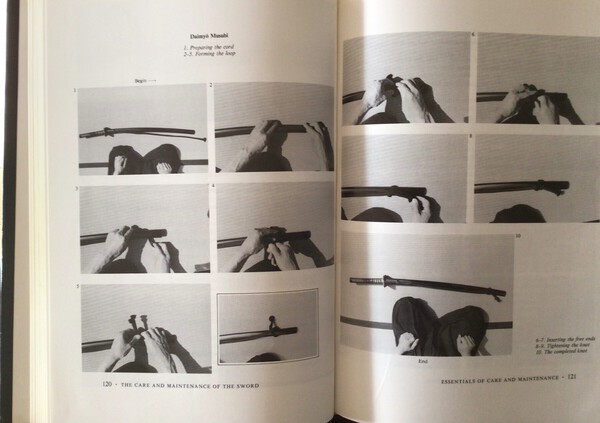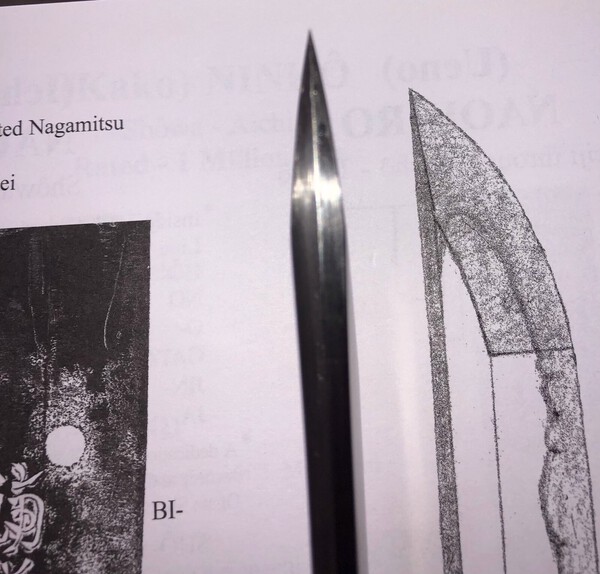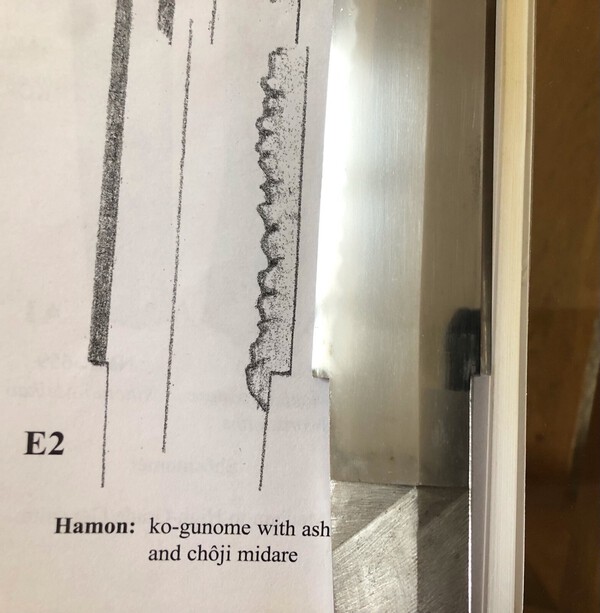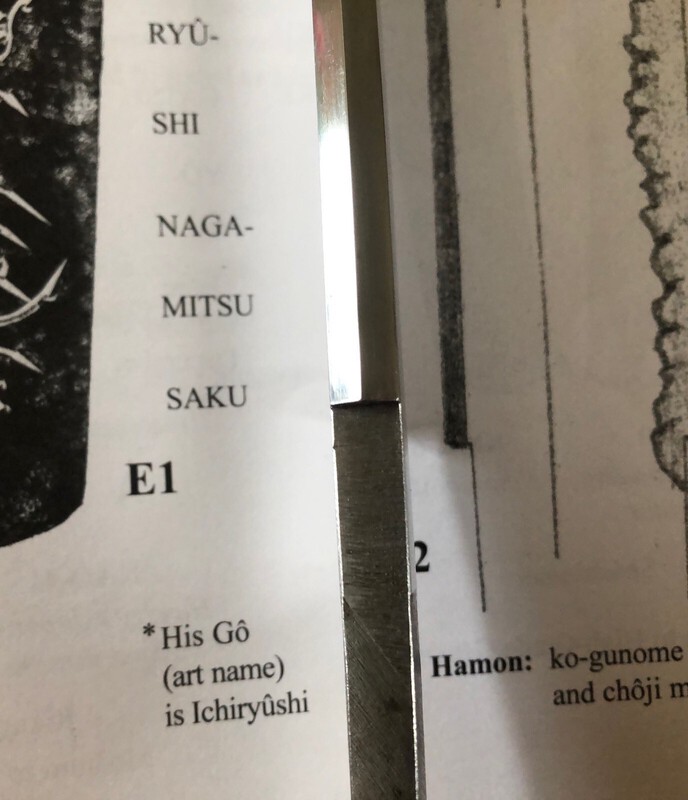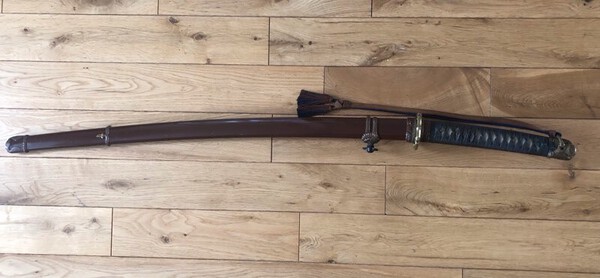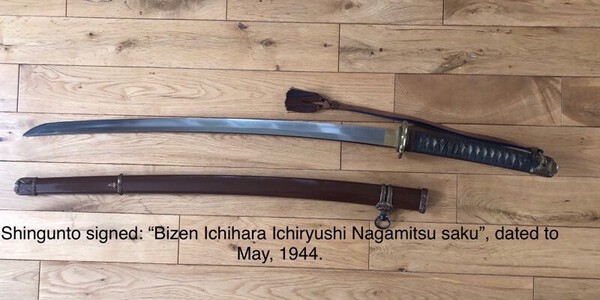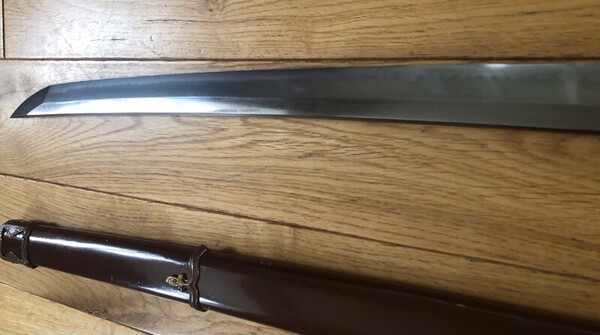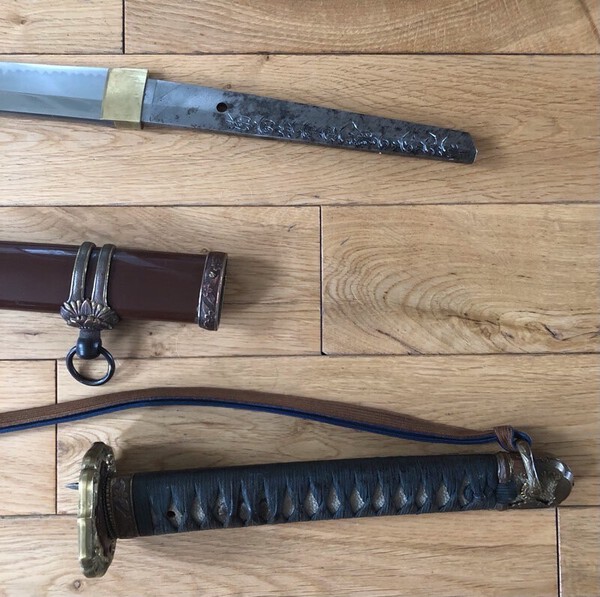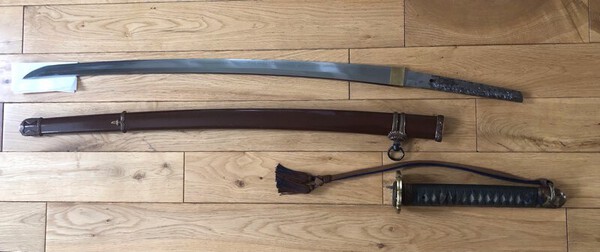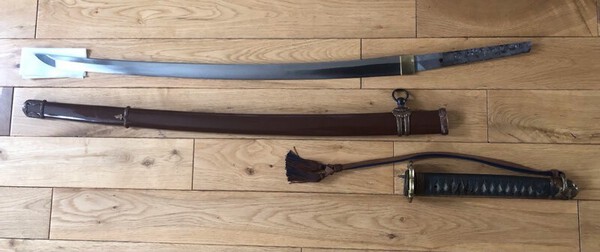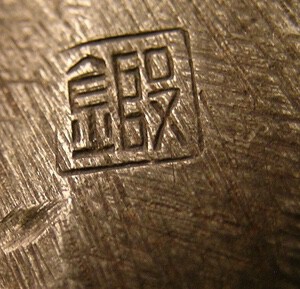
Beater
Members-
Posts
65 -
Joined
-
Last visited
Content Type
Profiles
Forums
Events
Store
Downloads
Gallery
Everything posted by Beater
-
Ishido Teruhide. http://www.japaneses...dex.com/teruhide.htm
-
Hi Henry, I think Grevedk has it covered. I thought I’d show you the (only) two methods I know and use and which are also the only two given in the book ”Japanese Swordsmanship” by Warner & Draeger. There may well be others and the various schools of swordsmanship all have their own versions of just about every aspect of sword use / etiquette, which defines their own interpretation - but these will serve you well for most situations. Regards, Kevin.
-
Just a thought, but would this be because of the death of Fujiwara Kanenaga, who worked at the Tenshozan forge and certainly signed many blades with his distinct small, precise kanji? I can’t recall the exact date of his death but I know it was in 1943. Regards, Kevin.
-
Any Nagamitsu fans out there - one for your perusal.
Beater replied to Beater's topic in Military Swords of Japan
Thanks Stephen;-) -
Any Nagamitsu fans out there - one for your perusal.
Beater replied to Beater's topic in Military Swords of Japan
-
Any stamps above or below the mei Pippo? 23rd generation Kanefusa used some interesting forging techniques, including the kabuse method. I used to own one that had a large stamp with lots of small kanji inside, situated below the mei, it effectively said made by the kabuse method. I believe it was a similar method to how Mantetsu swords were made ie by inserting a soft metal core inside a harder skin pipe? Agree, that is a nice hamon. https://www.Japanese...dex.com/kanefusa.htm
-
Any Nagamitsu fans out there - one for your perusal.
Beater replied to Beater's topic in Military Swords of Japan
Thanks for sharing Eric. What I see with yours and others I’ve seen for sale on Aoi etc is that post war art polishes reveal so much more than typical wartime polishes on Nagamitsu blades. He may have made decent swords but who ever polished for him set the bar low - I guess for wartime / campaign use all you really needed was a reasonable polish and sharpen. Your hada is very nice indeed. -
Any Nagamitsu fans out there - one for your perusal.
Beater replied to Beater's topic in Military Swords of Japan
Thank you. No, not suguha but there are lengths of hamon much less pronounced than the peaks of gunome you see clearly in my first batch of photos. Photo 4 shows the more pronounced gunome and photo 5, towards the kissaki, a more gentle. gunome. -
Any Nagamitsu fans out there - one for your perusal.
Beater replied to Beater's topic in Military Swords of Japan
Another interesting addition. So, that’s three katana-mei all in civilian mounts. I agree the koshirae does not look new. I did note the painted numbers on the nakago which I associate with aiding assembly - matching up blades to (military?) mounts, where the numbers are often repeated on the seppa etc. Can’t recall seeing painted assembly numbers on a Showa civilian-mounted sword…anyone? Quite a short katana at just over 24” (62.1cms). I understand that shorter and very stout blades are a feature of Nagamitsu. -
Any Nagamitsu fans out there - one for your perusal.
Beater replied to Beater's topic in Military Swords of Japan
So Trystan’s old thread revival of the “Crow Castle” sword which originally was in Type 98 fittings is signed tachi-mei, as is mine. Peter’s own bo-hi and the civilian mounted sword he has seen on eBay are both signed katana-mei. Not a large enough sample to draw any conclusions (yet) but it is shaping-up. I am coming round to the belief that Nagamitsu did not just randomly decide to sign tachi-mei or katana-mei, but did so based on the customers intended choice of mounts. -
Any Nagamitsu fans out there - one for your perusal.
Beater replied to Beater's topic in Military Swords of Japan
That would also be my hypothesis now I know it is civilian-mounted. One wonders if it were carried to war, with a leather combat cover? It is hard to imagine, with the great demand for officer’s swords at that time, that a martial arts practitioner could order a blade for their entirely personal, not military use, unless perhaps some respected Sensei, too old for military service but with sufficient status and clout to still get his wishes granted. -
Any Nagamitsu fans out there - one for your perusal.
Beater replied to Beater's topic in Military Swords of Japan
-
Any Nagamitsu fans out there - one for your perusal.
Beater replied to Beater's topic in Military Swords of Japan
Oh Peter, any bo-hi blade grabs my attention, so that’s a real bonus! Plus the different use of that dating system. This is indeed a rare mei. Love it! Thank you again. This is exactly what I hoped this thread might produce. There seems to be a great deal of speculation about why there are such variation of mei from Nagamitsu, so I hoped others fortunate to have owned the longer mei / dated swords and those who have already done some research, might add their findings. From that we may see patterns developing. Any thoughts why your katana side mei bucks the trend of the seemingly more commonly encountered tachi-mei? How is it mounted? Bo-hi are often ordered / sought by martial arts practitioners, so I wonder if it was ordered by someone with skill in the use of a sword or perhaps because it was supplied in katana mounts? I guess technically all Type 98 mounted swords, like mine, are mounted in tachi style fittings. No stamps, again like mine. We know he was RJT, so star stamps would be expected. Saka stamps are sometimes found, showing a blade made for or at the Osaka arsenal. -
Any Nagamitsu fans out there - one for your perusal.
Beater replied to Beater's topic in Military Swords of Japan
-
Any Nagamitsu fans out there - one for your perusal.
Beater replied to Beater's topic in Military Swords of Japan
I hope these photos cover the points you wanted to see. They are taken with my i-phone and I tried with and without flash. Best I can do. I’ve used Slough’s pages on Nagamitsu as a backdrop, as, from the photos you requested, I’m guessing you want to compare alongside his example? To my eye the similarities are evident and although the nakago-jiri of the long signature example in Slough differs slightly from mine, you have only to turn the page to see another example which is a dead ringer. Slough says that one is Shoshinmei, so I’d conclude Nagamitsu’s nakago-jiri show slight variation. -
Thought I’d share my sword with the Military sword / gendaito enthusiasts. I’ve read many of the old threads on NMB regarding Ichiryushi Nagamitsu and the debates around the many mei used to sign his (or in many cases his students) swords. In my mind this rare example, having both his “full-Monty” mei and a date is, undoubtedly, the work of the man himself. “Bizen ju Ichihara Ichiryushi Nagamitsu saku” and dated to May, 1944. There are no stamps whatsoever to be found on the nakago. Original, wartime polish. Slough’s book shows a similar example and I have only found reference to two others similarly signed pieces. Mine has quite a late date. I suspect that the green-blue ito and use of Type 98 mounts, rather than the more common Type3 seen on other later Nagamitsu blades, points towards this being a special order / custom made sword. Any observations, comments or new information regarding this fascinating smith greatly received. Kevin.
-
Here’s another by him I found on line…shorter mei and uncommon stamp. Also used name Osamura Kiyonobu and made gendaito which have papered. http://www.japaneseswordindex.com/gendai.htm
-
Looks to be the work of Noshu Nagamura Kiyonobu, a Seki smith. Longer signature than other examples I’ve seen by him and the absence of a “Seki” stamp, so possibly a traditionally forged? I’m sure others with more interest of gunto will fill in the gaps but looks authentic to me. Regards, Kevin.
-
Nov 1944 Gunto Identification, Sadamitsu
Beater replied to MatsumotoKen's topic in Military Swords of Japan
Appreciate your input Steve. Agreed, much more information available now than the early Fuller & Gregory works, although they get my total respect for the pioneering work they did. Both men helped me no end back in the 80’s. It would appear there’s a typo / error somewhere. Also, it was indeed Gassan Sadamitsu who I meant as unlikely to be making Showato. Kind regards, Kevin. -
Nov 1944 Gunto Identification, Sadamitsu
Beater replied to MatsumotoKen's topic in Military Swords of Japan
Bruce et al, The earlier thread didn’t really address Eric’s question. Clearly not the famous Gassan family member. The mei and workmanship just isn’t what we would expect. Opinions seem to suggest the previous sword was a Showato, with which I concur. The Sadamitsu from Markus book, says he is a student of Akihide and achieved a position in the First Seat in 1941. Slough also shows him to be Matsumoto Sadamitsu from Ehime. I am very surprised he was making Showato a couple of years later. If you look in Fuller & Gregory’s list, from Swordsmiths of Japan, 1926-1946 (attached), you will see two Sadamitsu listed with no oshigata or comments for either. There are quite a few smiths who they identified from various sources but about whom little is known. I would suggest this and Eric’s previously posted sword, are by one of these. Just a thought. I also couldn’t help noticing the OP’s name - Matsumotoken and that a smith named 松本 貞光 (Matsumoto Sadamitsu) is in another low-ranking list - 中下作 (CHUGE SAKU). Has the OP already identified his maker? However, this all appears to be at odds with Marcus’s entry… Regards, Kevin. -
Hi Paul, I believe this is “Seki ju Mori Toshiharu saku” The Sho stamp indicates it is non-traditionally made. Regards, Kevin. Opps - sorry SteveM, you already replied!
-
Thanks for your reply Chris. Yes, I saw him listed in Slough’s, page 221 and noted the name in F&G’s earlier booklet ‘A guide to Showa Swordsmiths’, at #34. There is of course, no oshigata with that one, so I wasn’t prepared to make the connection. Thanks also Mal, as ever, for your clarification. Kind regards, Kevin.
-
Hi Chris, Do you think it is odd that the tang you show above (link below) and Karl’s blade are both mounted in kaigunto, when it is said he was RJT - army certified swordsmith? Or is it common to bat for both teams? Not my interest, so just asking. I noted that when you expand the write-up IMA provide (press the ‘read more’ link) regarding this sword, it is a load of waffle about another smith, so just wondering how reliable his info is? https://www.ima-usa.com/products/original-wwii-Japanese-navy-officer-p1937-kai-gunto-handmade-katana-by-tsukahara-kanetsugu-with-scabbard?variant=40001105592389 Regards, Kevin.
-
In case you are unaware, your sword is signed: “Noshu ju Tsukahara Kanetsugu kin saku”. (Respectfully made by Tsukahara Kanetsugu, living in Noshu province.) Another similar oshigata can be found on page 95 of “Swordsmiths of Japan 1926-1945”, by R. Fuller & R. Gregory.
-
Chris I may have misunderstood but the mei you show is “Toto ju nin. Ikkansai Kunimori kin saku”. (東都住人 一貫斎国護謹作).This is the mei used whilst he worked at Baron Okura’s tanren Jo. It is widely thought blades were actually made by his pupils and merely signed by Miyaguchi. They are not thought to be true gendaito. Every one I’ve seen was mounted in good Shingunto mounts and would date from around 1937 onwards, after he left Yasukuni. Regards, Kevin


